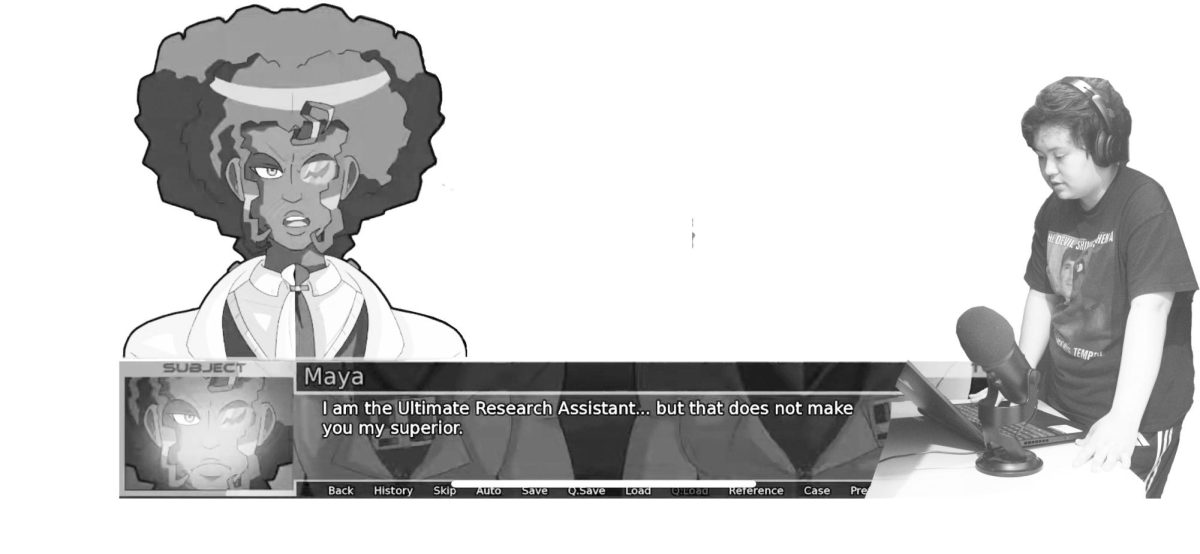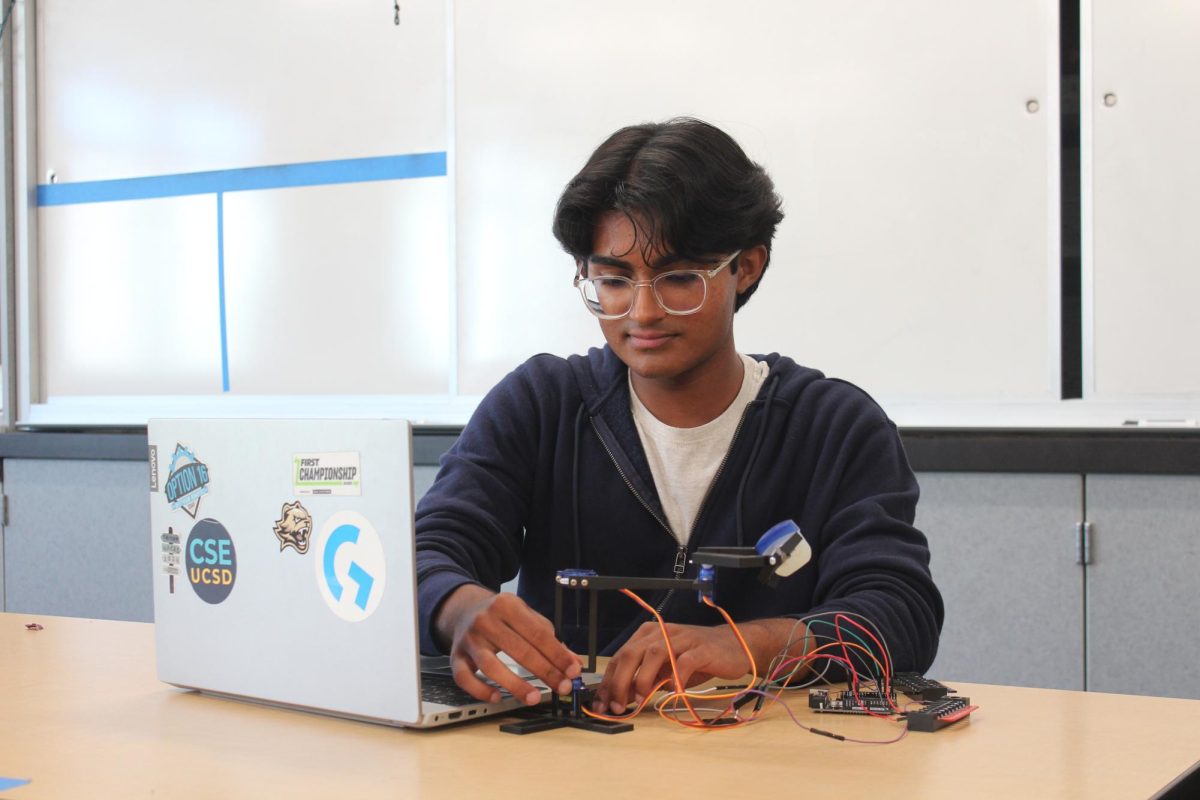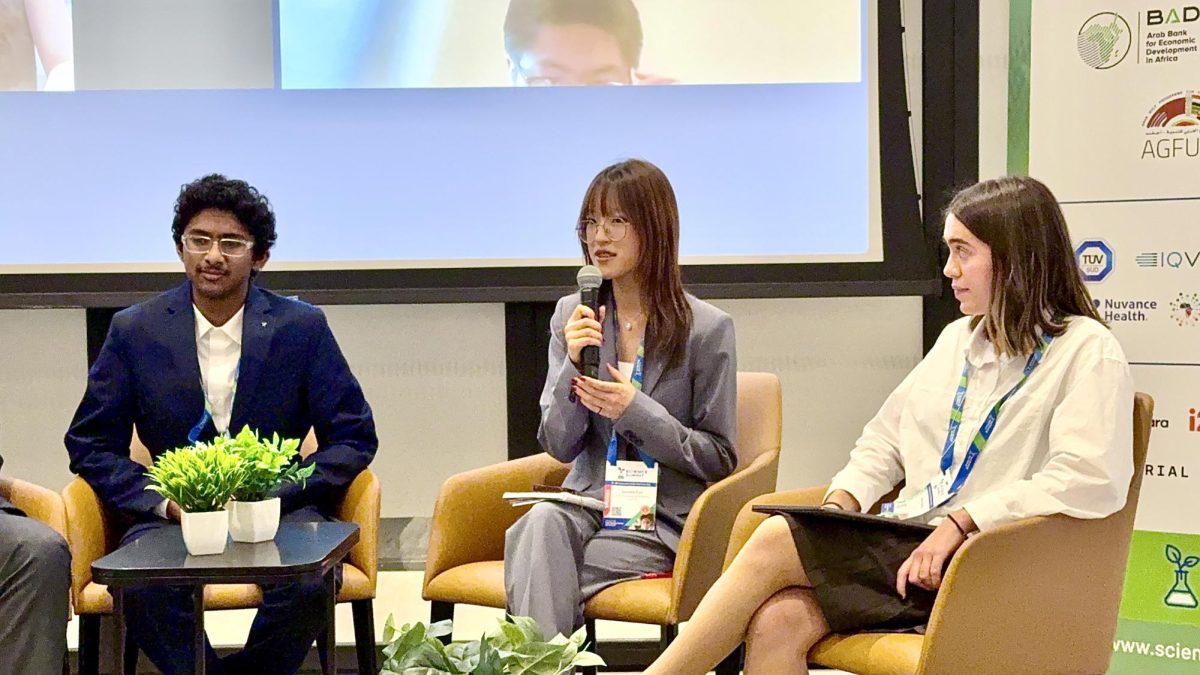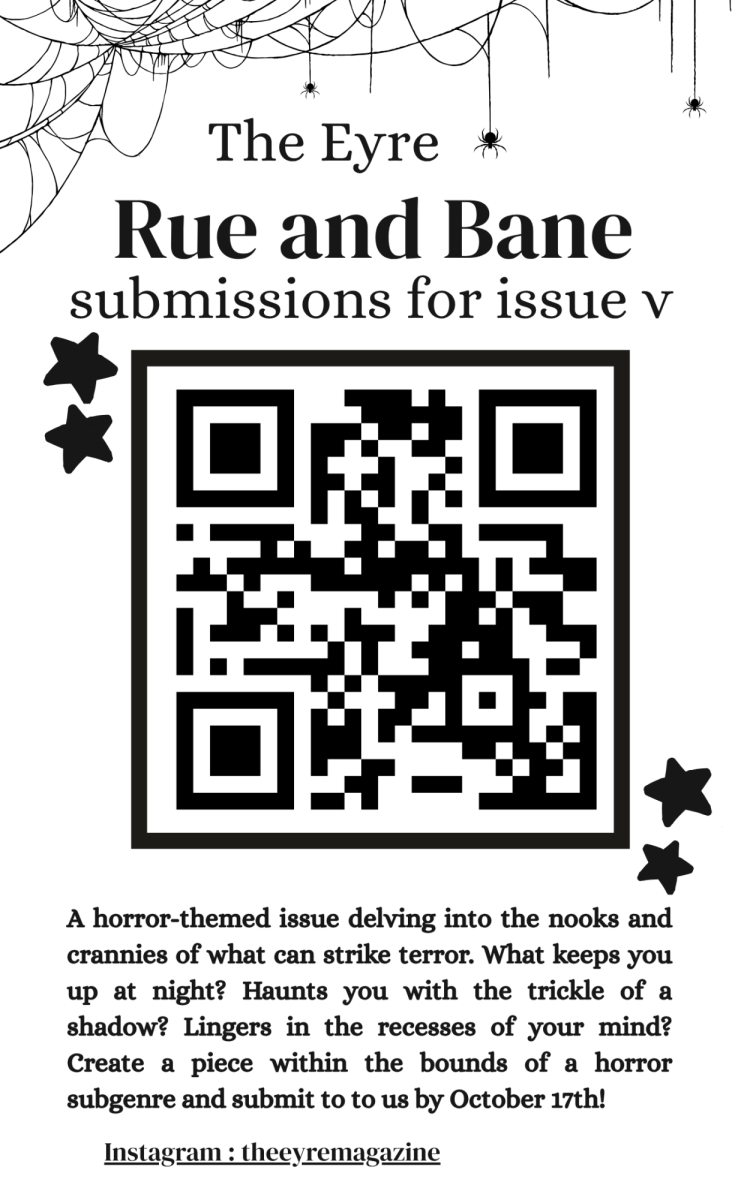Standing in his sound-treated pod, or screaming box as he liked to call it, Sammy Reilly (11) read the lines on the computer in front of him for the Roblox game Otra. But he didn’t read them, he brought them to life: becoming a spying Darilia, the main antagonist with just the magic of his voice, microphone, and imagination.
Reilly is well-seasoned in acting, as both an actor on stage and as a voice-actor behind the scenes. Reilly said he especially enjoys voice acting because it allows him to have more fun with his performances, free of judgment.
“One of my favorite aspects is being able to be so many different characters without having to worry about your appearance,” Reilly said. “I can be all these different characters mashed together and nobody judges me because I’m in a place where I’m actually supposed to act all weird. It’s really cool to have this giant array of characters and abilities. It’s kind of like a secret power.”
Reilly first started voice acting in 2020.
“I initially started voice acting during [the pandemic] because I was bored,” Reilly said. “I found that I loved acting and I would try out being different characters and it eventually grew on me. With voice acting, you can have as many takes as you want while if you mess up on stage during a performance, you have to roll with it. I also like being able to see the script in front of me while talking.”
The first time Reilly voice acted, it was for his own personal project, which he never published in the end. However, he had trouble fully embracing the character.
“I didn’t know much about the voice acting world, so I just said whatever lines I needed into the mic, but it felt off since it was just reading the words,” Reilly said. “After that, I learned that voice acting isn’t just reading things, it’s acting them out, giving them emotion, something that can’t be conveyed by words themselves.”
Now when looking for voice-acting jobs, Reilly mainly uses a website called Casting Call Club, a place for voice actors and other script writers or animators to search for voice acting jobs like fan films, animations, games, and comic dubs.
“For projects that have actually been published or finished, I do have a few game characters, but a large majority is animation,” Reilly said. “I do have a few game characters, but a large majority are shows and animation.”
Casting Call Club project managers will list the style of voices desired in character portfolios and voice actors will audition for them. When selecting roles to audition for, Reilly takes into account the range of the character.
“Usually, I go for voices within my range which are typically feminine kinds of voices, but I do have the range for young boys up to preteens,” Reilly said. “I really like going for villain roles, but I typically get cast as comic relief.”
Currently, Reilly is working on different projects such as games and animations, examples being Danganrompa: Singlefile, Butterfly Effect, and Otra.
“A lot of them are still in early development,” Reilly said. “There’s a horror game called ‘Butterfly Effect’ by Lumina Glide Studios. I was originally cast as the main character but we eventually decided that I would be one of the bosses instead. It’s so fun and I love ‘Butterfly Effect’ so much. There’s so much effort [put into the game] and the modeling is fantastic.”
During the voice-acting process, Reilly will sometimes receive guidance from his directors.
“Typically, whoever writes the script will give specific directions,” Reilly said. “If they’re looking for something more detailed and with a certain cadence, we do live direction, where we call and I record my voice according to how they tell me to. They usually listen to how I say the lines and change it bit by bit until it’s what they need. It’s usually really easy to do, but it can be tough scheduling meeting times for live direction, so I lean towards doing it on my own purely because my schedule is weird with school. Most of my directors are patient and wonderful people that genuinely care about their project and those who work on it.”
When begins recording his lines, Reilly first looks at the character portfolio and voice profile, which inform the actor who the character is and their voice type. Then, he pictures himself as the character in the scene he’s recording to get into character.
“I remember the background and their personality and then slip into the character and slowly build it around myself,” Reilly said. “Instead of [imagining] these characters as friends, I imagine my friends as the friends. If this dragon is about to blow up my friend, then I would imagine myself in that situation and that’s how I’d essentially voice act the scene. I’d imagine myself as a character.”
Reilly said when getting into character, it’s important to sometimes separate yourself from the narrative. This is the case for a Roblox game Reilly is working on called “Otra,” where he voices the main antagonist.
“I’m this evil witch lady,” Reilly said. “It was so nice recording her lines. It’s difficult playing characters that you don’t necessarily agree with. For characters I don’t agree with, I usually put myself into the character, but at the same time, I keep in mind that I don’t agree with what my character is saying. I get into character but not so far that my opinions are the same as theirs. It’s good to have a boundary between you and your character.”
There are certain instances where Reilly finds voice-acting especially difficult.
“There’s another project I’m working on now and there have been a lot of scripts being trashed and remade and then trashed again,” Reilly said. “I’ve had to record so many different versions of the character because the character changes over time and there’s a character who was originally like nerdy and then he became really chill and then eventually evolving into a character that doesn’t even remotely resemble the one that you know was. And it’s difficult slipping into the different characters because you’re used to one versus the other.”
While it’s easy to find and audition for roles, Reilly said that to book jobs, he must show directors that he can play a variety of characters.
“A really good way to get things going is auditioning, but outside of that, you want to build a portfolio,” Reilly said. “I have a website for myself that gives all the details about my voice and contact info. I made it myself. Above all else, you want a demo reel. You want about a minute or so of a bunch of different voices, moods, inflections that you can pack into that one minute so you can show just how versatile your voice is.”
With five active projects and his school life to balance, Reilly reserves his Sundays for voice acting.
“I typically record for three to four hours depending on my workload,” Reilly said. “I’m also trying to find new things to add to my demo reel and I want it to be up to date. I usually use the extra time if I finish early to make more demo reel material.”
Reilly has recently finished producing his minute-long 2025 demo video.
“Several voices are demonstrated, including my lowest range and highest range voices,” Reilly said. “I also like to throw in a screaming or shouting line to show that my microphone doesn’t peak with more demanding lines. I mix my own audio and edit my own demo reels. It’s always good to have a variety of emotions in these demos as well. For directors that want a certain emotion for a character, they may look into your demo reel for it. Plus, you don’t want to serve up the same old reheated emotion and delivery every time. ”
When Reilly voice acts, he treats it as a job, nevertheless a fun one. In the future, he said he hopes to devote more time to his craft and pursue it as a career if financial situations allow.
“I would love to do voice acting in the future as a full-on job,” Reilly said. “[Voice acting] a little tough to get into as something that you can live off of, but if I had the opportunity to do that for the rest of my life as a job to primarily use to support myself, I would.”
Through voice acting, Reilly has been able to sort through his emotions and grow from the experiences.
“[Voice acting] felt strangely natural to me,” Reilly said. “It felt good to get my emotions out as a character. It also helped me with my own understanding of my emotions and how to deal with them.”
Now five years into his career, Reilly believes he has come a long way.
“My first voice-acting project was my own project that I didn’t even want to release to the public,” Reilly said. “My first public VA appearance was as a murder investigator and a woman with a
mustache in the same podcast. Despite the less-than-optimal audio, I find it fun to listen to my old recordings to see how much I’ve grown.”







